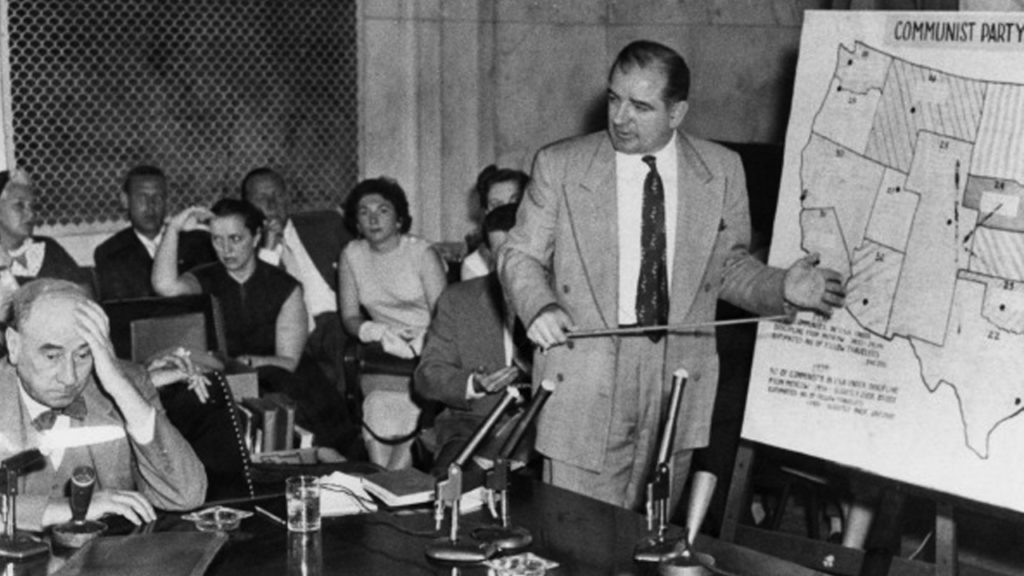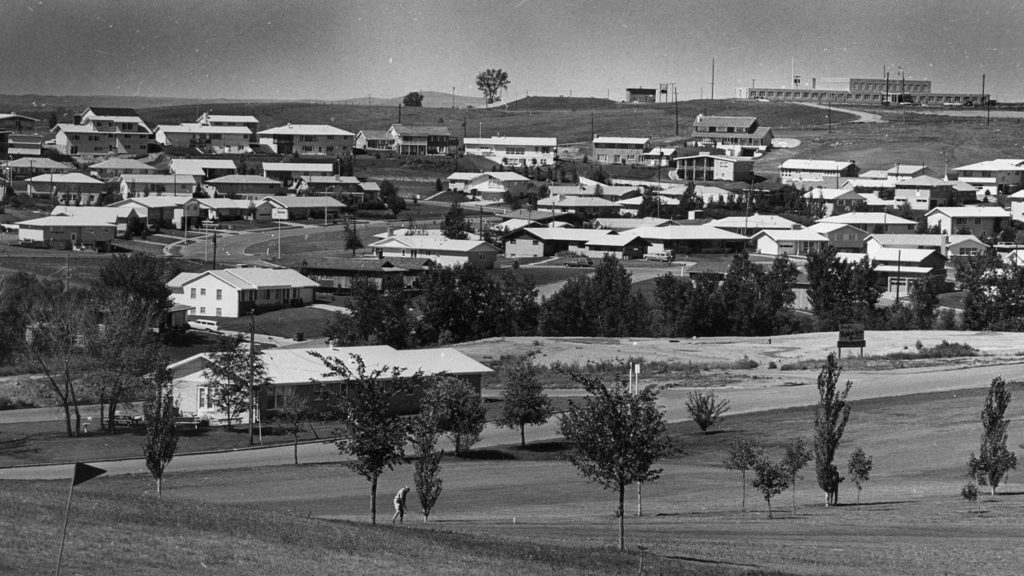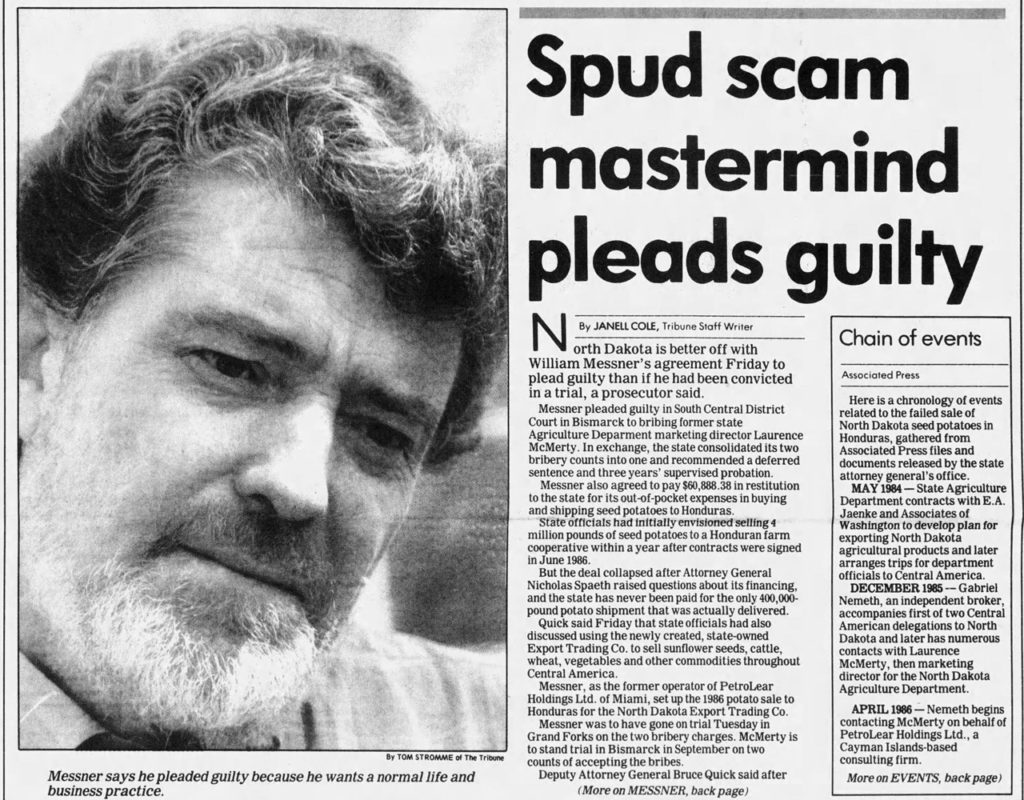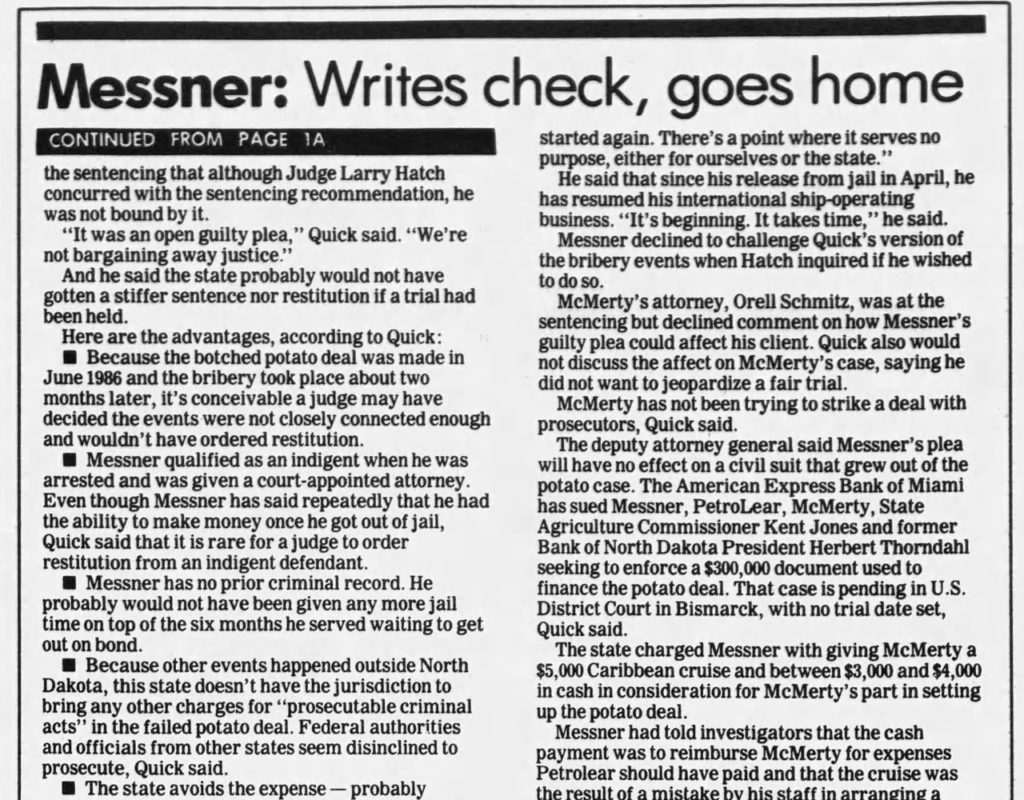Oil!
On Thursday, April 5, 1951, the Amerada Petroleum Company of Tulsa, Oklahoma completed a 17-hour test of an oil well on the Clarence Iverson farm near Tioga, North Dakota. The well produced 307 barrels of 44 gravity oil and around 5 million cubic feet of gas. The company described the find as ‘commercial.’
A Lower Profile
During the 1950s, the national conservative backlash against Franklin D. Roosevelt’s New Deal achieved virulent proportions. This was the era of Joseph McCarthy, the House Un-American Activities Committee, “communist infiltration,” and the real or perceived theft of America’s nuclear secrets. Anything savoring the aroma of socialism or social engineering was suspect during this period of American history. There was a national attempt to dissolve Indian reservations, undo Social Security, and roll back every remaining New Deal program.
Economic Development
After years, even decades, of quiet service, the Bank of North Dakota was sparked back into active life with the election of William Lewis Guy as North Dakota’s 26th Governor. Addressing the North Dakota Legislature in January 1961, the new young governor declared, “The philosophy of lending of the Bank of North Dakota should reflect our faith in the potential of economic development for our own people.” The Bank should have “more latitude in financing industrial development.”
Student Loans
Although a modest program of student loans had been created in the 1940s by Langer’s Bank Manager Frank Vogel, the Bank of North Dakota became involved in student loans in a significant way beginning in 1967.
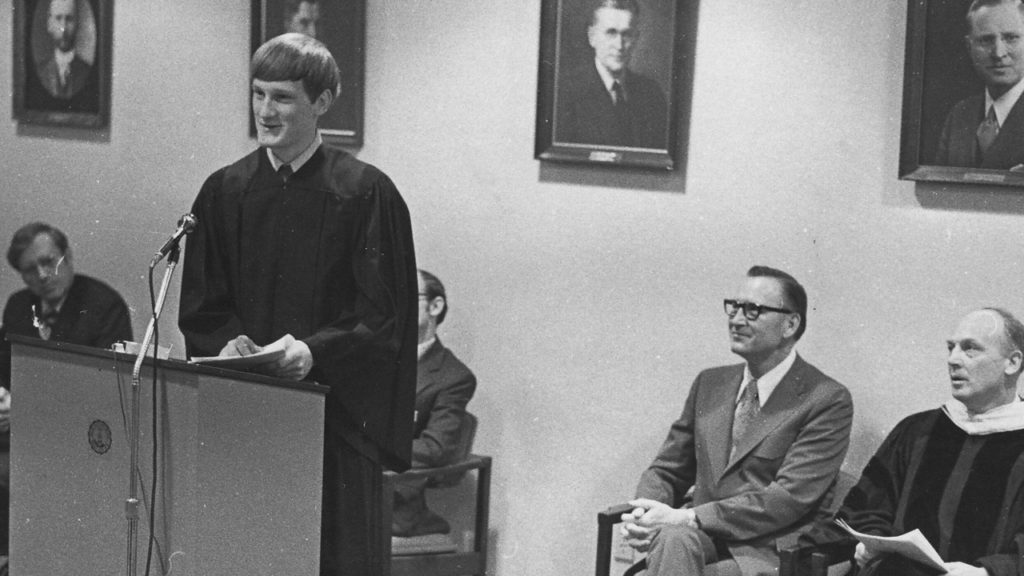
Investigations, Misappropriation, Kickback Schemes and Redemption
At the end of Bill Guy’s tenure as Governor in 1973, during one of the most hotly contested US Senate races in North Dakota history, Republicans orchestrated an attack on the Bank. They demanded that the new Governor Art Link fire Bank President H.L. Thorndal. They pointed to allegations of kickback schemes, misappropriation of public funds, the loss of $22,000 to a con artist, and other signs of inadequate management.
The Honduran Potato Scandal
In 1986, the Industrial Commission and the State Bank were embroiled (and embarrassed) in the infamous “Honduran potato deal.” The idea was to ship four million pounds of ND seed potatoes to Honduras, part of H.L. Thorndal’s quest to find foreign markets for North Dakota commodities.
Bank Managers
The governing structure of the Bank of North Dakota has been remarkably stable. After initial controversy, oversight of the Bank was lodged in an elected board, consisting of the governor, attorney general and commissioner of agriculture and labor (agriculture commissioner after 1997). This Industrial Commission, as it was titled, would hire management for the Bank. The manager had various titles until 1969, when the title president was first used. After some controversy, an advisory board was established that same year, and the board’s involvement and importance has increased, though decision-making remains with the president and the Industrial Commission.
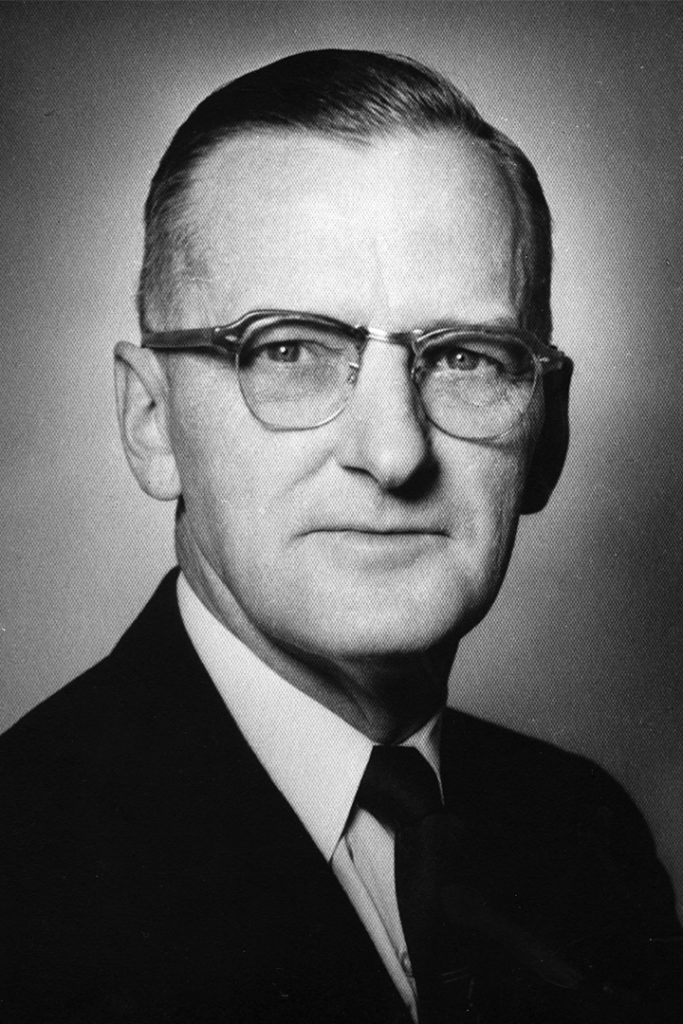
Theodore W. Sette
1957-1961
In 1954 the Bank hired its new manager from within its own ranks. Theodore W. Sette had worked for the Bank for 26 years. He specialized in purchasing municipal bonds.
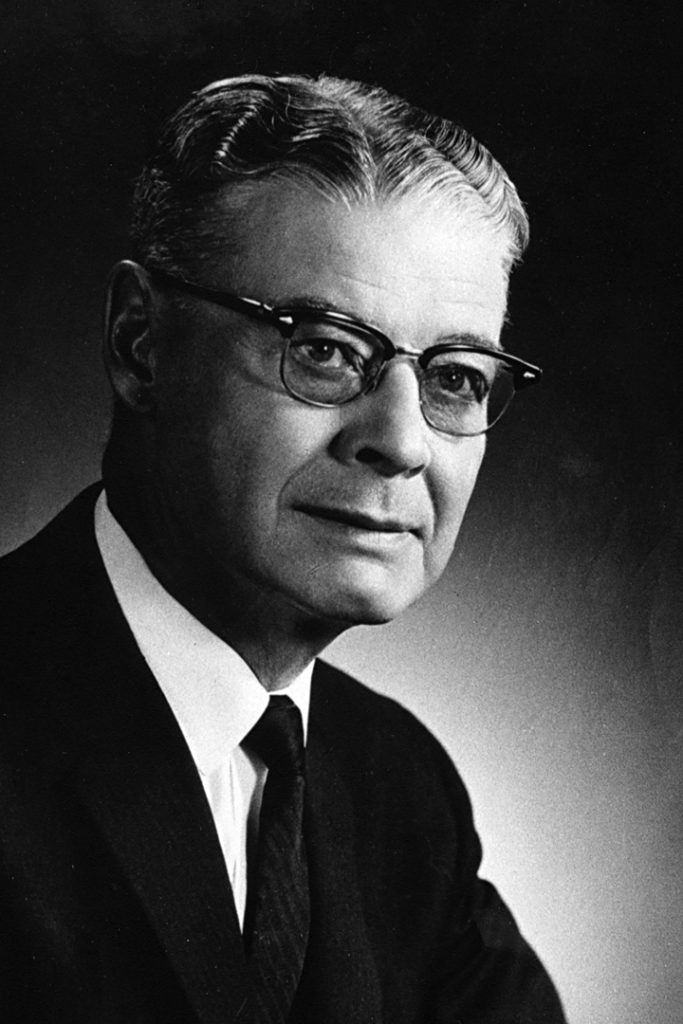
George M. Thompson
1962-1968
Prior to joining the Bank of North Dakota, George Thompson was associated with the James River National Bank before moving to Bismarck in 1933 and taking a job at BND in the transit department.
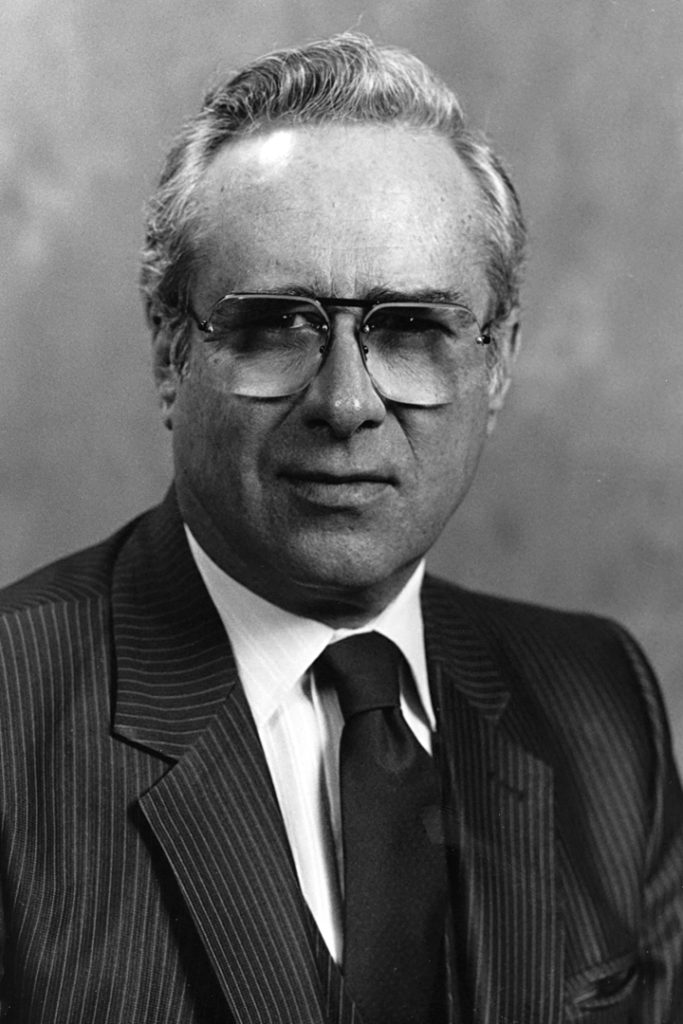
Herb L. Thorndal
1969-1986
Herbert Thorndal was born January 21, 1929, in Minot, North Dakota. He graduated from high school in Fergus Falls, Minnesota.
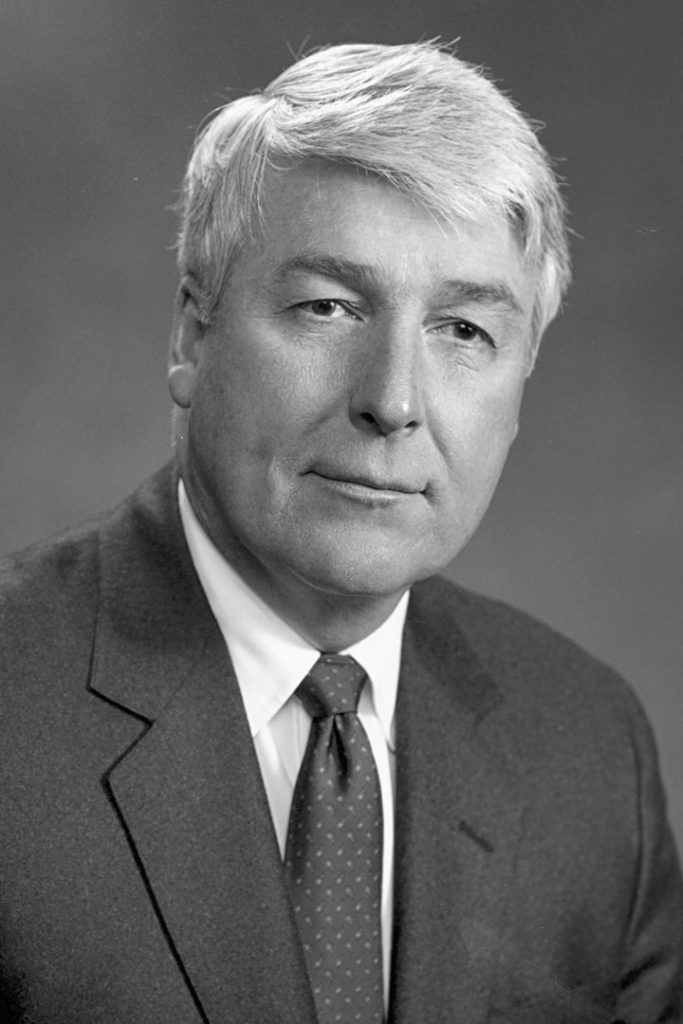
Joseph A. Lamb
1986-1992
The new president of the Bank of North Dakota was another small-town banker, Joe Lamb, who owned the bank in Michigan City, ND, the second smallest bank in the state.

